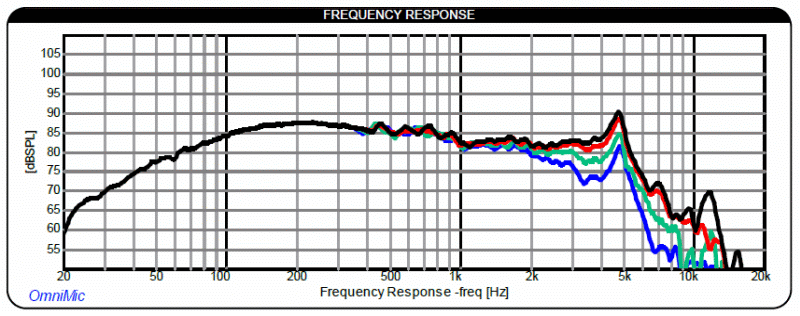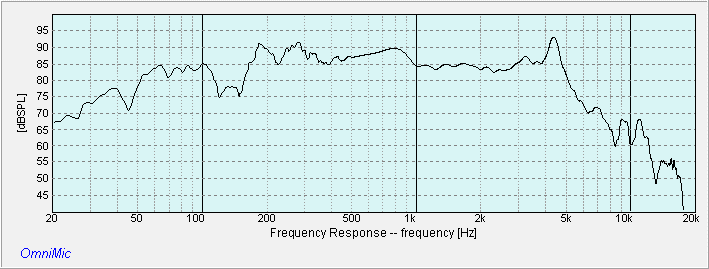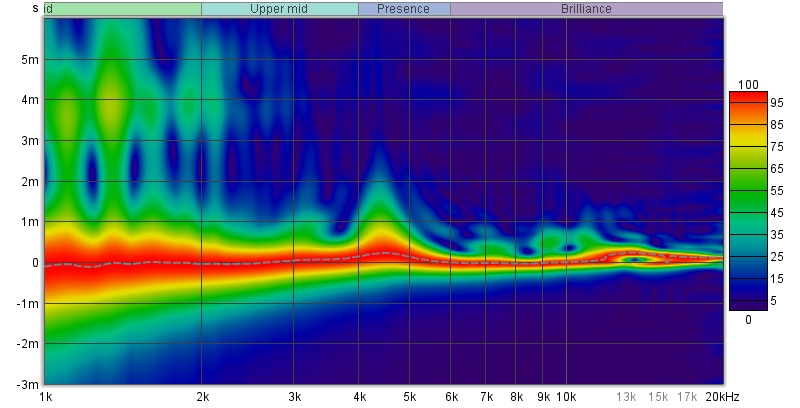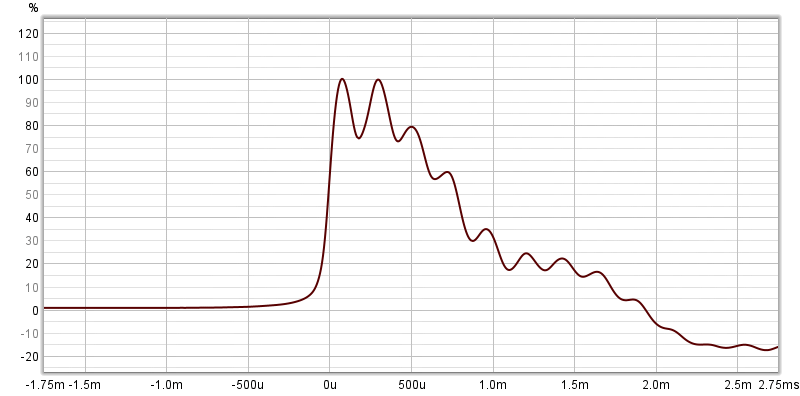|
This post is a preliminary look at Dayton’s GF180-4 midwoofer. She is very affordable, at only US$27.98. Her glass fiber cone and rubber surround are touted to damp cone resonances, leading to a smoother midrange for easy crossing to the tweeter.
Generally, she looks similar to the published FR by Dayton. What differs is a bump at 700Hz. Farther up at 4.5kHz, we can see the same cone breakup peak.
The GF180-4 distortion plot recorded the Total Harmonic Distortion at 3.34%. I am not alarmed by this because most of it are from the cone breakup. In an actual 2-way, the distortion will be greatly reduced when a low pass network is in place.
In the Waterfall plot, strong artifacts at 4.5kHz are seen. From this, we deduce that it’s more than just amplitude but artifacts are generated at this frequency.
The Toneburst Energy Storage plot shows the artifacts from another perspective. In this measurement, the Z-axis is in cycles instead of time. The bunch of light blue slices (artifacts) from 3kHz~6kHz are from the cone breakup. What is remarkable is there are hardly any artifacts from 1kHz~3kHz. Maybe that’s what the sales pitch is all about. That the cone resonances are damped for better crossover. This is confirmed in the Spectrogram. Crossing at 2.5kHz works best as there are no green streaks emitting from there. Hopefully, crossing at this said frequency will suppress the 4.5kHz peak. You don’t want this peak punching through the treble. |

November 19, 2023Drivers Evaluation, HIFI DRIVERS






